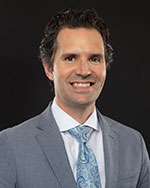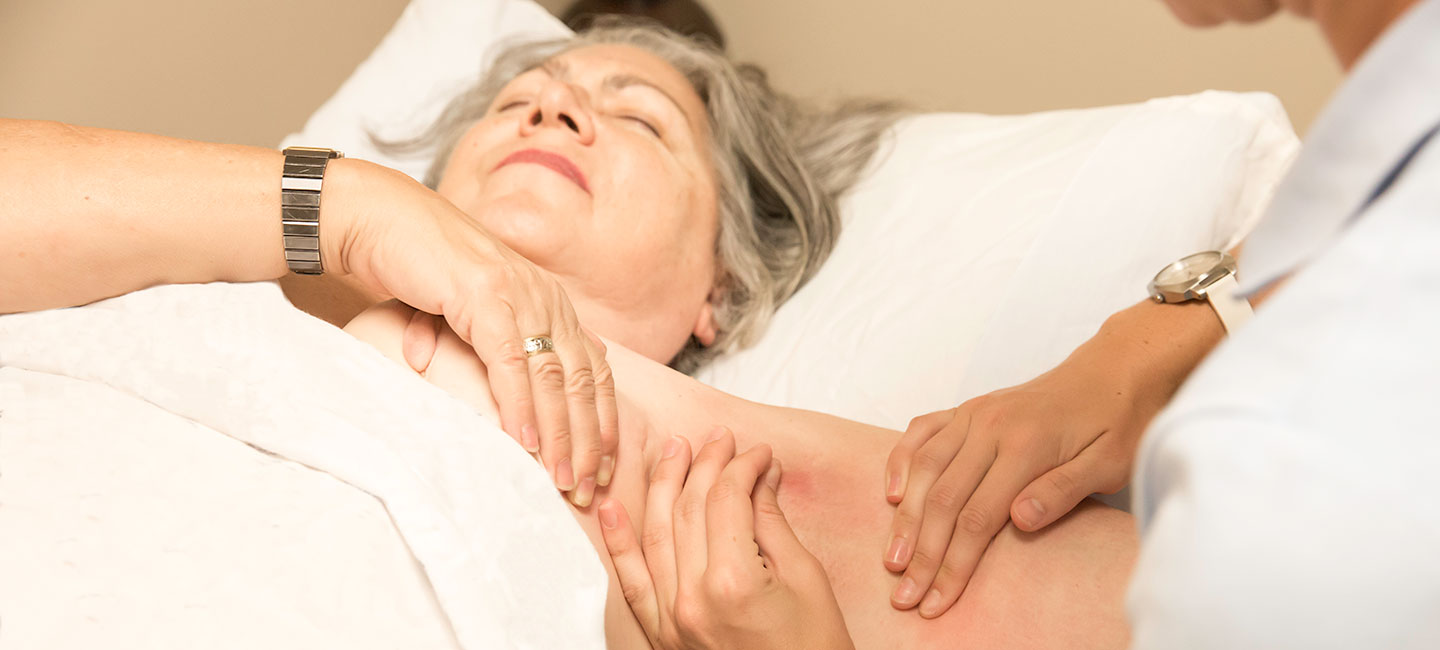Procedure Reduces Risk of Lymphedema After Breast Surgery
MaryLou Proudfoot Kennedy is trying something she’s never done before: dragon boat racing. She was interested in picking up new hobbies after surviving breast cancer in 2019.
She doesn’t take her active lifestyle for granted, especially since she knows she was at risk for developing lymphedema, painful swelling in the extremities, after undergoing a mastectomy.
“I have a girlfriend who had breast cancer 15 years ago and to this day she has to wear a compression sleeve and a brace at night because she is in so much pain,” said Proudfoot Kennedy.
Proudfoot Kennedy was diagnosed with invasive ductal carcinoma in May 2019, and after having chemotherapy needed surgery. During one of her pre-surgical consultations, Dr. Nicholas Panetta, a plastic surgeon and director of Moffitt Cancer Center’s Multidisciplinary Lymphedema Clinic, told Proudfoot Kennedy about a new procedure called lymphovenous bypass surgery to reduce her chance of developing lymphedema.
“I was told this could work, but we have no guarantees. But I said let’s do it,” said Proudfoot Kennedy. “If I don’t I am probably going to get lymphedema, so there’s no way I am worse off trying.”
Lymphedema is caused by the buildup of fluid and can occur when lymph nodes are removed during surgery. Because the axillary lymph nodes are usually removed during breast cancer surgery, about 44% of breast cancer patients develop painful arm swelling.

“Arm swelling, heaviness and fullness can lead to pain and limited activity in daily living,” said Panetta. “It can also cause cellulitis, a soft tissue infection, which can require inpatient and outpatient care.”
Moffitt’s Multidisciplinary Lymphedema Clinic was created in 2016, and providers began to shift focus from just treating lymphedema to finding ways to prevent it. One of the solutions was lymphovenous bypass surgery performed at the same time patients are having their lymph nodes removed during breast surgery.
During lymphovenous bypass surgery, the surgeon performs microvascular surgery to identify and preserve lymphatic channels from the arm. Following removal of the axillary lymph nodes, a microscope is used to reconnect lymphatic channels to outflow veins so fluid continues to flow freely instead of collecting in the extremities. The procedure is performed in the operating room at the same time as a lumpectomy or mastectomy and done in coordination with the breast surgery team.
Panetta has performed almost 250 lymphovenous bypass surgeries at Moffitt so far, and a retrospective study showed the procedure reduced patients’ risk of lymphedema from 44% to 7%.
“Lymphedema has always been this collateral damage for breast cancer patients and there really didn’t used to be any real options to offer them,” said Panetta. “We are working to continue to evolve the lymphovenous bypass technique to prevent this from happening all together and so far, we are having very good results.”
Panetta says the next steps are to establish long-term follow up for the patients in the retrospective study, and to continue to increase the number of lymphovenous bypass surgeries in the breast clinic. In the future, he hopes to educate other surgeons across the country on the procedure and eventually expand it to other cancer clinics at Moffitt.
Proudfoot Kennedy has been in remission since her surgery and post-surgery radiation in 2019, and has not had any symptoms of lymphedema.
“I feel like it worked,” she said. “Every time I go for my follow-ups, everything looks the same and I have no issues. I think it’s a wonderful option that’s out there.”



